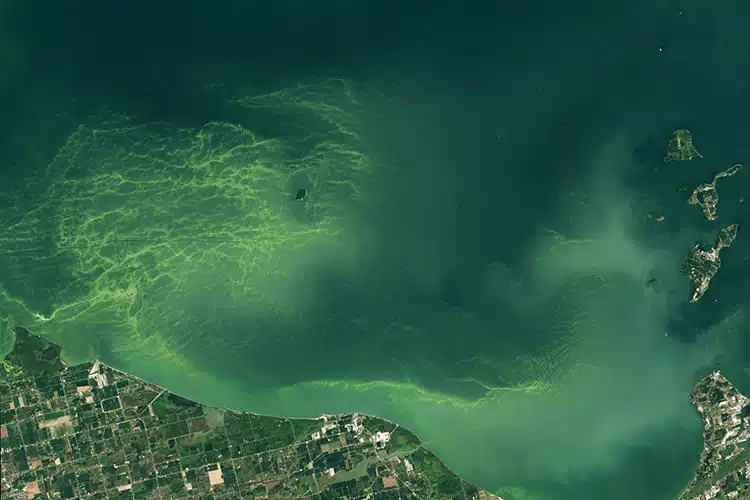The bloom spread across Lake Erie as captured from a satellite.
The Great Lakes hold a fifth of Earth’s fresh surface water.
They are incredibly valuable aquifers and ecosystems, hosting plenty of plant and animal life.

The bloom spread across Lake Erie as captured from a satellite. (Photo:OLI-2/Landsat-9/USGS via NASA Earth Observatory)
But like all ecosystems, they change with the seasons and the times.
Scientists track these changes in many ways, perhaps most dramatically through satellite imagery.
They vary from year to year.
The water appears almost teal, but swirling through one large region are emerald light streaks.
This is an algal bloom stretching 320 square miles of the lake’s surface.
Blooms are affected by temperature, rainfall, and runoff, among other factors.
The blooms are composed of bacteria, mostly theMicrocystis cyanobacteria.
Environmental conditions determine how far and long the blooms flourish.
While they may look beautiful, the mini creatures produce a toxin known as microcystin.
Humans are typically advised to avoid water boasting blooms or high toxin levels.
For scientists, tracking bloom appearances and expansion can shed light on the wider climate.
These high-tech tools help probe and ultimately protect an irreplaceable aquifer.